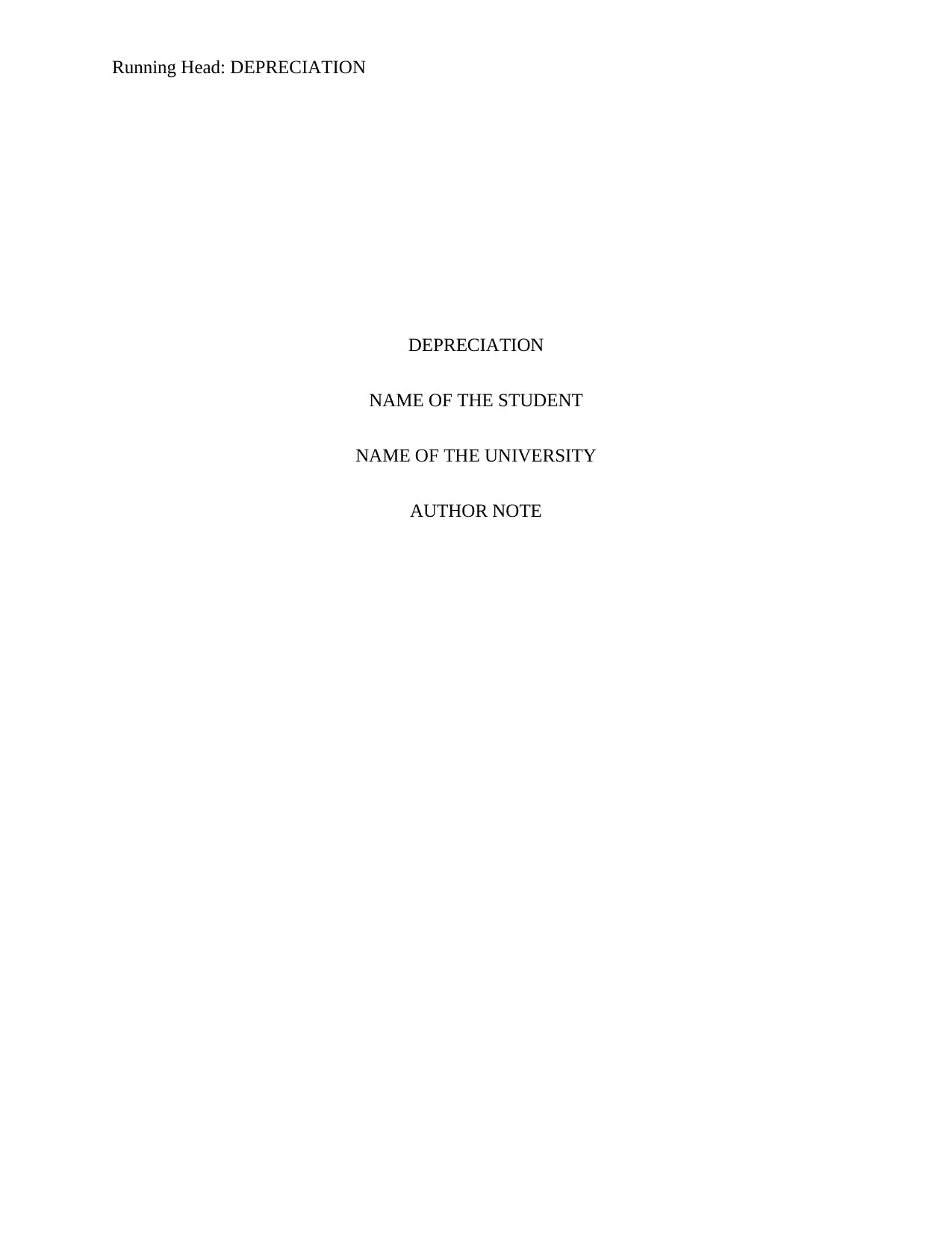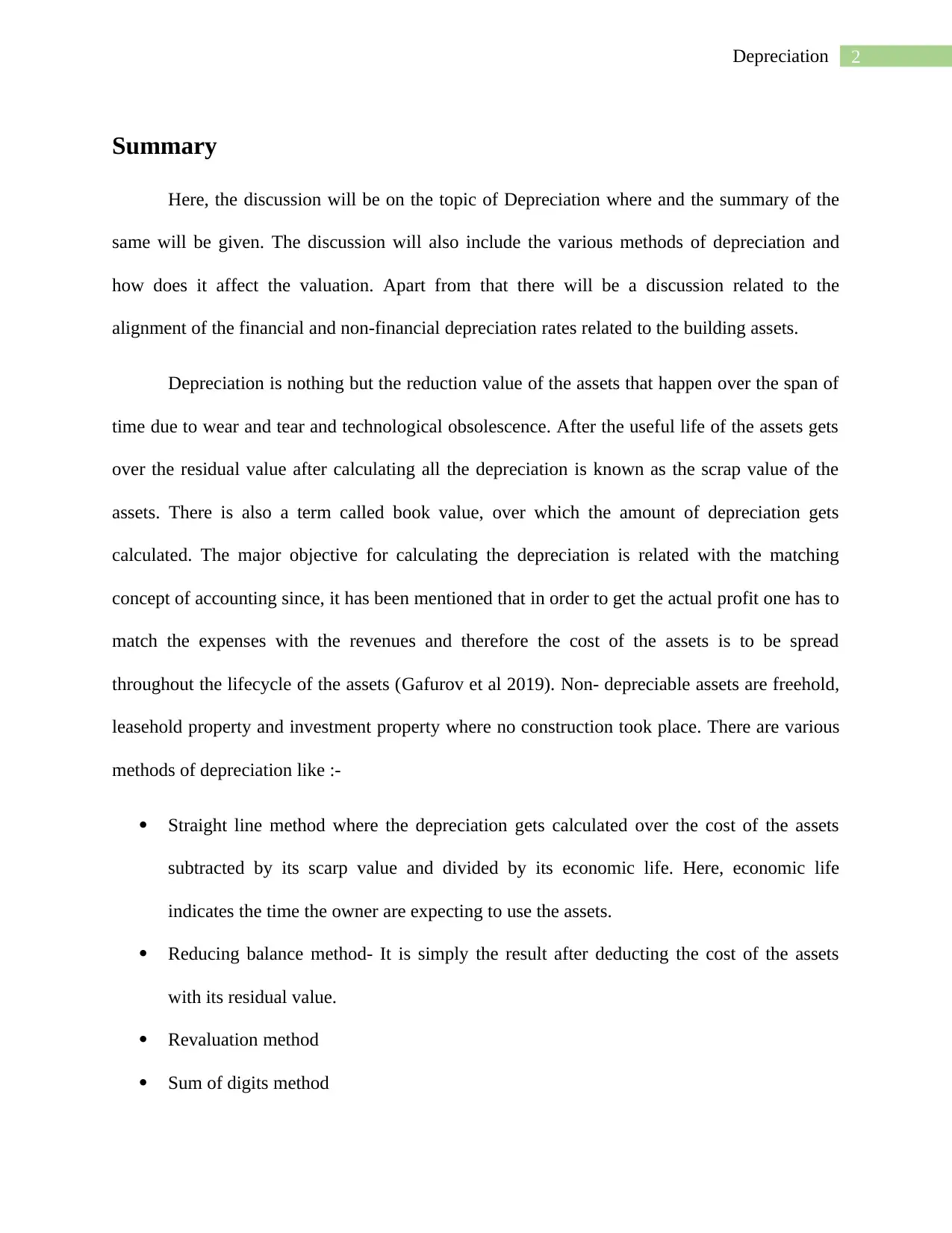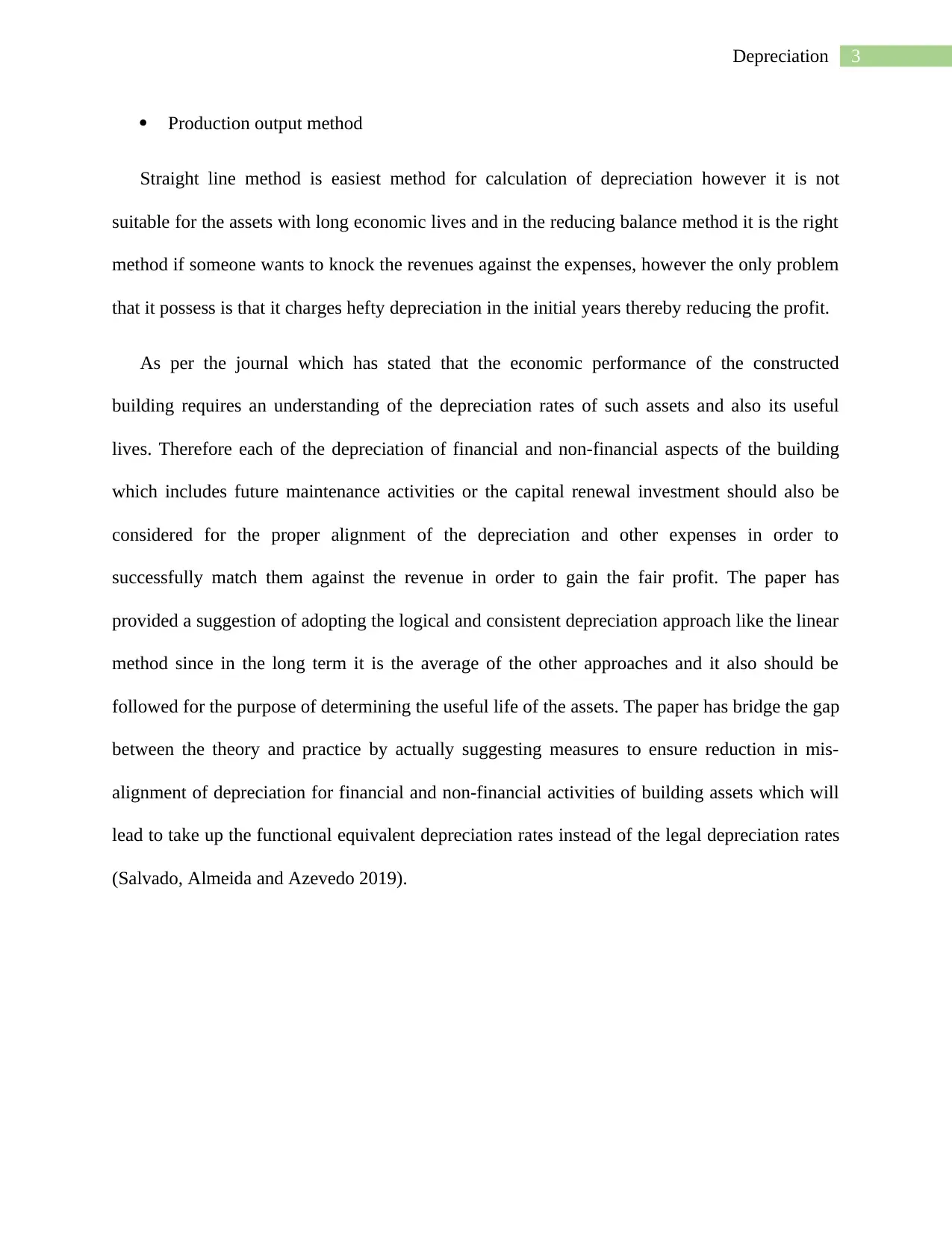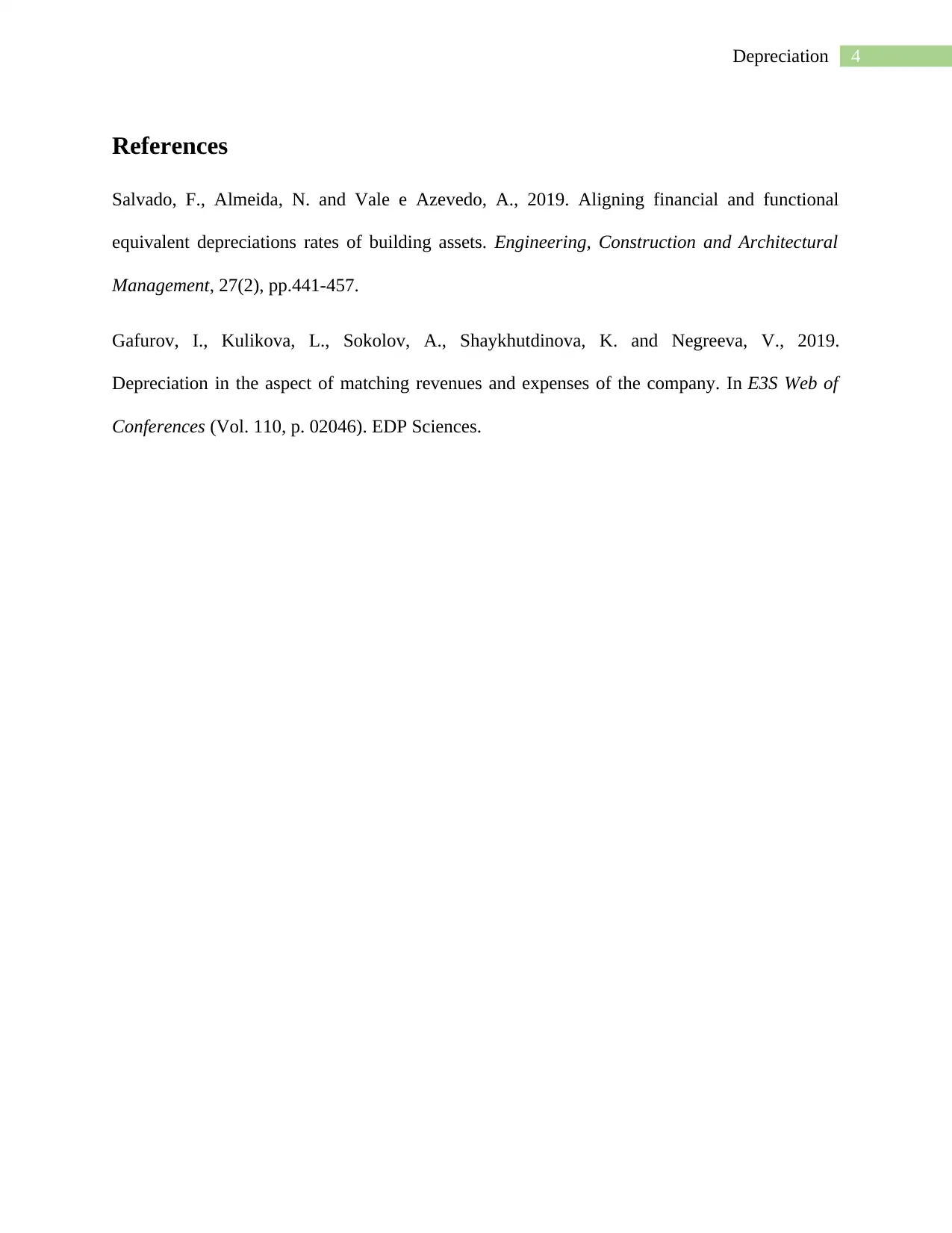Depreciation and its Impact on Asset Valuation: A Report
VerifiedAdded on 2022/09/16
|5
|672
|16
Report
AI Summary
This report provides a comprehensive overview of depreciation, covering its definition, objectives, and various methods. It explores how depreciation, the reduction in asset value over time due to wear, tear, and obsolescence, impacts financial reporting and asset valuation. The report discusses the matching concept, non-depreciable assets, and different depreciation methods such as the straight-line and reducing balance methods. It also highlights the importance of aligning financial and non-financial depreciation rates for building assets, suggesting the adoption of a consistent depreciation approach like the linear method to reduce misalignment and determine the useful life of assets. The report emphasizes the practical application of depreciation principles to ensure accurate financial representation and effective asset management.
1 out of 5












![[object Object]](/_next/static/media/star-bottom.7253800d.svg)